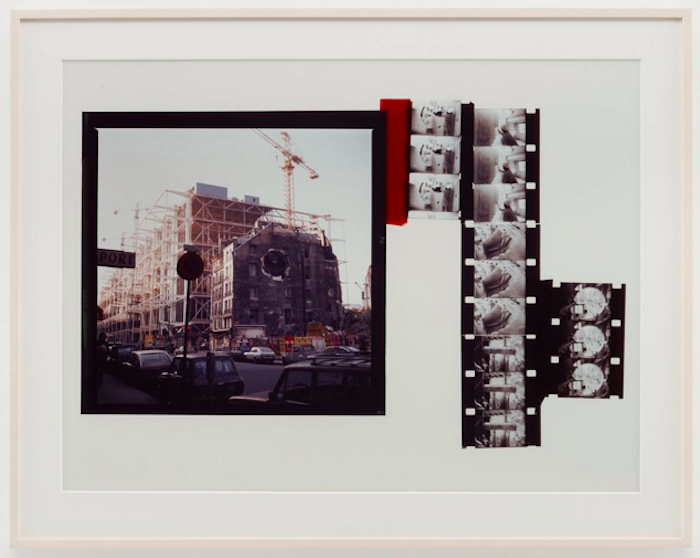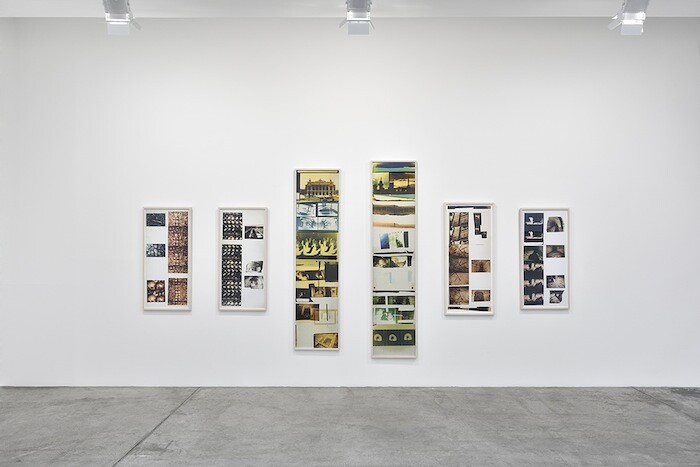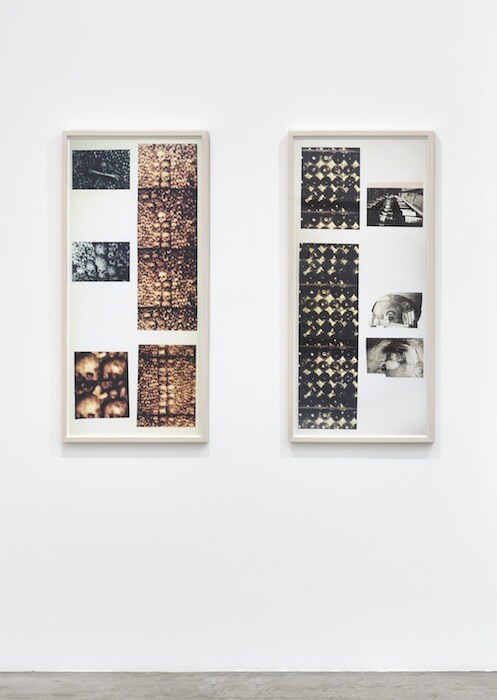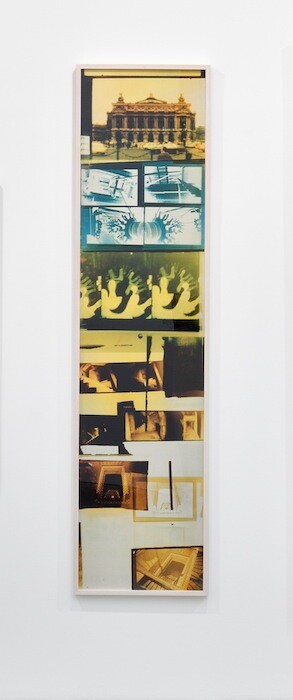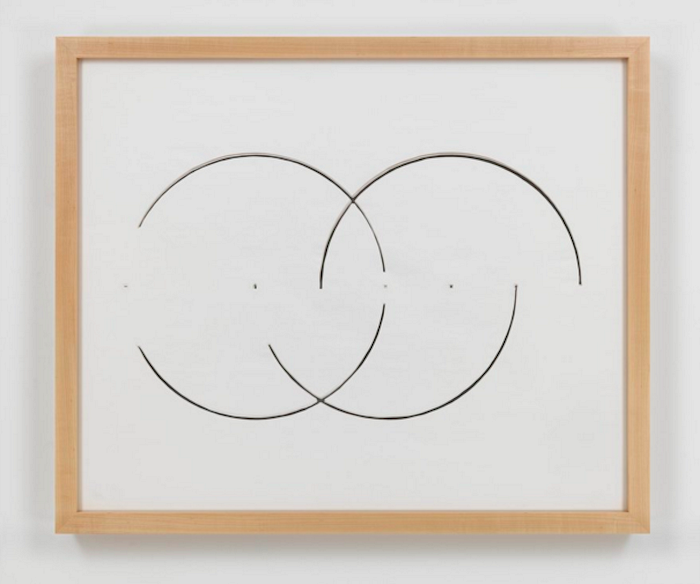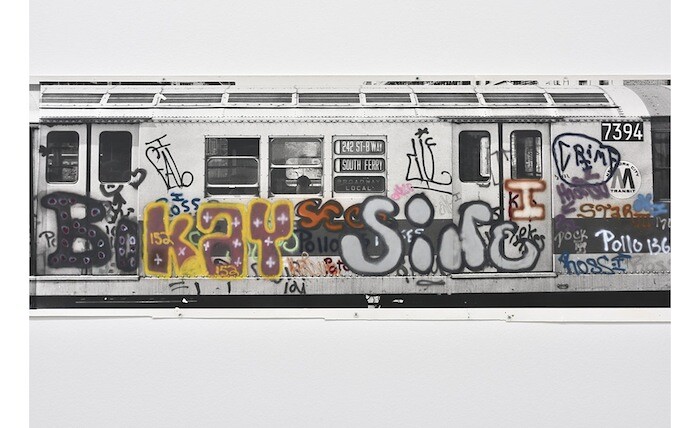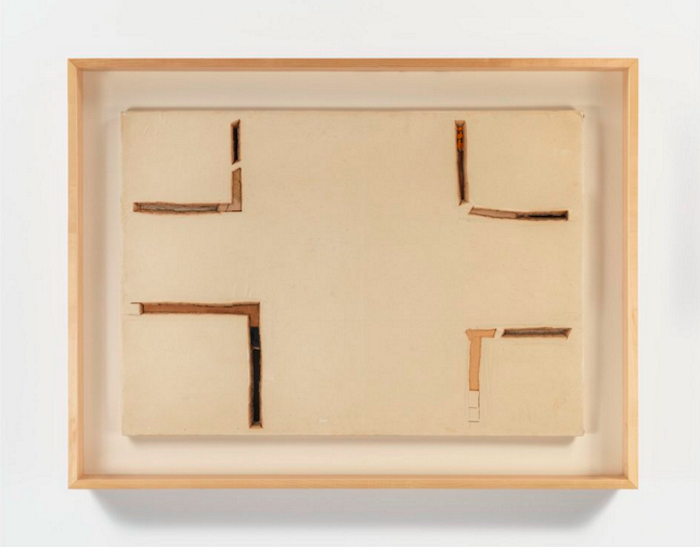“If anything emerges to cut up, I’ll go anywhere, anytime”1 wrote Gordon Matta-Clark in 1975. Earlier that year, Paris had come calling, and, at the invitation of the ninth edition of the Paris Biennale curated by Georges Boudaille, the artist realized Conical Intersect (1975). Photographs, photomontages, and film footage of Matta-Clark’s highest profile project in Paris (where he spent considerable time during his short lifetime) are now on view as part of the artist’s first solo show in France since 2000.
Conical Intersect, an enormous oculus that Matta-Clark carved through two abutting seventeenth-century apartment buildings on rue Beaubourg, is a spectacular example of what Matta-Clark described as his practice of “anarchitecture” as well as a case study of how the artist engaged with physical and sociopolitical structures. Overlooking the construction site where the Richard Rogers and Renzo Piano-designed Pompidou Center would open two years later, Conical Intersect created a giant peephole onto gentrification in-progress. Matta-Clark cited Anthony McCall’s seminal light and fog installation Line Describing a Cone (1973) as inspiration, but Conical Intersect’s corkscrew form also evoked the tornado of controversy surrounding its neighbor. Though the Pompidou Center is now an architectural icon and top tourist attraction, it was initially much maligned for its bold exoskeleton design and the fact that an entire neighborhood (residential housing as well as Paris’s main market, Les Halles) had to be razed to make way for the museum.
Ever conscious of the communities in which he worked, Matta-Clark acknowledged the fraught status of the construction site and the final historic dwellings slated for destruction in the name of civic architecture and modern art. In the 18-minute film Conical Intersect (1975) we see the artist down on the street engaging with passersby who appear alternately concerned and bemused. Recalling his convivial community-based restaurant FOOD as well as such performances as Pig Roast (1971), for which he roasted a pig under the Brooklyn Bridge and served 500 onlookers, Matta-Clark doled out beef sandwiches to locals and gawkers who watched as he and his assistants pierced through layers of wood and stone using chisels, sledgehammers, and saws.
Revisiting Conical Intersect as the Pompidou Center celebrates its fortieth anniversary lends the artwork new relevance. Rather than freeze-frames of a particular historical moment, the photographs on view at Marian Goodman reveal Matta-Clark’s chiseled aperture to be a wormhole enabling us to see backwards and forwards. Images of Conical Intersect simultaneously evoke the future (the modern, yet-to-be-competed Pompidou) and the past (the ancient, soon-to-be-demolished residences). From today’s perspective, that future is now the past and that past is gone without a trace. Adding another layer to this time-space confusion is the fact that the photo and film documentation is now presented in a seventeenth-century building just a few blocks from the pair Matta-Clark cut through.
Another highlight of the exhibition, a lesser-known Paris-based project, Sous-Sols de Paris (Paris Underground) (1977), is also represented through a series of photomontages and a 16mm film (appropriately shown in the gallery’s subterranean stone cellar). Venturing beneath monuments including Notre Dame and the Paris opera, Matta-Clark documented the city’s invisible underbelly. He presented the urban strata he surveyed in large, colorful, scroll-like photomontages assembled in the dark room. In one of these, Sous-Sols de Paris: L’Opéra (1977), a sepia-tinged exterior shot of the Palais Garnier’s Baroque-style façade crowns vertically stacked images of pulley systems, sixteenth-century quarries, and, finally, the cistern designed to protect the building from groundwater buildup (the legendary subterranean lake where the title character hides in Gaston Leroux’s The Phantom of the Opera, 1910).
While some of the “Sous-Sols” sites are publicly accessible (like parts of the ancient catacombs), many are not, which makes Matta-Clark’s documentation all the more thrilling. In the film, shown here as a 16mm transfer with badly aged, almost incomprehensible sound, local experts recount historical trivia about the locations Matta-Clark films using a handheld camera and a flashlight. Underneath Notre Dame, an unseen guide recounts how vestiges of the ancient city walls were discovered in the medieval crypt during the construction of a subterranean parking lot in the 1960s. As with Conical Intersect, multiple layers of history swirl together to dizzying effect. The film, now itself a historical document, reveals as much about the period in which it was made (film technology, cars, fashion) as it does about the buried relics Matta-Clark seeks to unearth.
The penultimate line of voice-over in Sous-Sols de Paris (Paris Underground)—which plays over images of a muddy, unidentified grotto—muses, “Now, the real world has become loaded with all sorts of things, and the underground world has become something that inspires peace.” Touché: the more “things” change, the more they stay the same.
Letter from Gordon Matta-Clark dated December 4, 1975 shared by Jane Crawford, The Estate of Gordon Matta-Clark, Weston, CT, as cited by Judith Russi Kirshner, “The idea of community in the work of Gordon Matta-Clark,” in Corinne Diserens, ed., Gordon Matta-Clark (London: Phaidon, 2003), 148.
